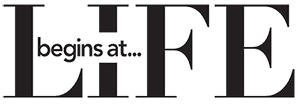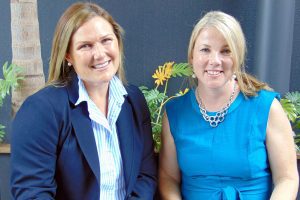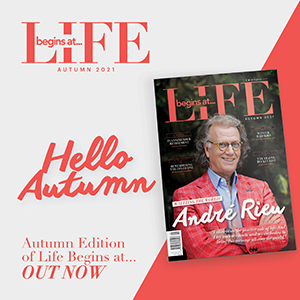Acupuncture utilises a system that has been in place for over 3000 years, however it’s the current supporting research that’s drawing attention from many first time users, writes Dr David Schievenin.
WHAT EXACTLY IS ACUPUNCTURE?
Acupuncture is one of the branches of Chinese Medicine; a broad term for a modality that also incorporates cupping, moxibustion (heat therapy) and tui na (Chinese massage). Acupuncture techniques are as varied as the conditions it treats, with standard acupuncture, electro-acupuncture and laser (needle-free) acupuncture being utilised widely. Chinese medicine theory, put very simply, discusses disease as a manifestation arising from disharmony within the body. During these times, specific points along channels of t he body become more ‘active’. Acupuncture needles are inserted into these points, which vary according to the condition, to elicit a physiological response.
For those that have not experienced a treatment, a consult usually consists of the practitioner taking a detailed medical history before checking the tongue and pulse to make a diagnosis. Fine acupuncture needles (about as thin in size as a human hair) are then inserted into specific points with minimal discomfort and are retained for approximately 15 minutes depending on the condition and may be stimulated (a process that involves rotating the needle in small movements) by the practitioner intermittently during the treatment. Dietary advice and exercises may also be discussed during the consult and herbal formulas may be utilised as an adjunct to the acupuncture. The amount of treatments required to treat a condition obviously varies, however as with any treatment plan, a conversation with the practitioner to discuss treatment duration should address this matter.
While there is extensive documentation over many centuries discussing conditions that acupuncture treats, there is a growing need for these claims to be supported by randomised controlled trials. The World Health Organisation compiled a list of conditions acupuncture has conclusively been shown to treat through research. Among these included are pain (sciatica, lower back pain, shoulder pain and neck pain), allergic rhinitis (hay fever), headache, women’s health issues and depression.
THE WAY IT WORKS
Chinese medicine theory discusses the movement of Qi (energy) throughout a network of channels in the body. During times of illness, this energy becomes blocked at specific points that usually become tender to the touch. Application of acupuncture needles at these specific points, that usually occur at the site of the issues and distal from it, are able to elicit a therapeutic effect and provide relief from the condition.
From a biomedical point of view, there are numerous proposed mechanisms for the effect acupuncture has on the body; increased local blood flow and analgesia are associated in treatment of musculoskeletal conditions; alterations of neurotransmitters are attributed to the effect on the emotional state and headache relief, and assisting with women’s health conditions by affecting the hypothalamus pituitary axis (Cheng, 2013).
A SAMPLE OF RESEARCH
There have been extensive studies on acupuncture and its effect on lower back conditions. Acupuncture has been shown to be cost-effective in the treatment of chronic lower back pain. The practice is also often combined with herbal formulas in the treatment of menopausal symptoms including hot flushes, sweating, sleep disorders and irritability.
A review of trials of acupuncture in the treatment of migraine concluded that there was consistent evidence that acupuncture provided benefits to migraine sufferers with some evidence that acupuncture had better outcomes than prophylactic drug treatment with fewer adverse effects.
ON THE SAFE SIDE
Acupuncture is regulated by strict guidelines for practitioners. The application of sterile, single-use needles is generally safe when applied by an appropriately qualified practitioner. Acupuncture has minimal adverse reactions, and for this reason it has gained in popularity as it may be used in conjunction with other therapies without complications. Currently in Australia, a minimum four-year registered course, encompassing pathophysiology, anatomy and physiology in addition to Chinese medicine theory and extensive clinical practice, is required to gain registration.
“Acupuncture has minimal adverse reactions, and for this reason it has gained in popularity as it may be used in conjunction with other therapies without complications.”
ACUPUNCTURE AND DRY NEEDLING
One of the most common questions I receive from patients relates to this matter. Dry needling is arguable an off shoot of acupuncture, specifically focused on muscular skeletal syndromes. With dry needling, acupuncture or hypodermic needles are inserted into foci points of the muscle with the aim to relieve myofascial pain. Acupuncture treats according to a Chinese medicine diagnosis, which incorporates a more holistic approach and addresses a broad range of conditions. While dry needling is not a registered profession, it is often practiced by practitioners registered in other modalities (i.e. physiotherapy and chiropractic).
CHOOSING A PRACTITIONER
In 2012, Acupuncture and Chinese herbal medicine became a registered profession along with medical practitioners, dentists and physiotherapists. Any practitioner calling themselves an acupuncturist, Chinese medicine practitioner of herbalist must be registered with Australian Health Practitioner Regulation Agency (AHPRA).
It is important when selecting a practitioner that they are registered to ensure adequate qualifications. To verify your practitioner meets these requirements you can check their registration status at ahpra.gov.au. Most practitioners are affiliated with an association and offer private health rebates.
In recent years, information regarding acupuncture has become more accessible and the topic is often brought to the media’s attention by high profile celebrities or sports persons. As more people in Australia have become acquainted with the practice’s benefits, acupuncture has become increasingly popular. Clinical trials including that carried out in Melbourne hospitals’ emergency departments, in which patients presenting with pain were offered acupuncture, are adding to the growing body of evidence to support of this modality in conjunction with, or independent from, standard medical care. If you are considering acupuncture for a particular condition, it may be worthwhile discussing the treatment options with a qualified practitioner.
ABOUT
 David Schievenin is a registered acupuncturist and Chinese herbalist with over 15 years clinical experience. He currently holds the position of Program Leader at Endeavour College of Natural Medicine where he has been lecturing for six years. David has a Bachelor’s Degree in acupuncture and Chinese herbs and a Masters in acupuncture.
David Schievenin is a registered acupuncturist and Chinese herbalist with over 15 years clinical experience. He currently holds the position of Program Leader at Endeavour College of Natural Medicine where he has been lecturing for six years. David has a Bachelor’s Degree in acupuncture and Chinese herbs and a Masters in acupuncture.





















Add Comment